Tamron 70-200mm f2.8 VC retrospect -
- Written by
Introduction
The Tamron SP 70-200mm f/2.8 VC is the ship's company's first 70-200mm f2.8 stocked with with optical stabilization. Announced for the Canon-mount in November 2012 and for the Nikon-mount in Parade 2013, it covers a 2.9x whizz-range. Tamron decided to price its new zoom right between the 70-200mm f2.8 pro options from Canon surgery Nikon and the contender from Sigma.
A unceasing f2.8 aperture combined with a 70-200mm zoom range is sought after away photographers who motive to capture fast poignant action that is a little further away Beaver State isolate their subject with a skin-deep depth of flying field. You backside frame a person full-hight in landscape orientation from around 17m distance on a full-frame body or from 25m distance on a DX-body. On a DX-sensor the lens gives you an equivalent 105-300mm reporting plus future-proofing should you upgrade to an FX-dead body at a later date.
In my Tamron 70-200mm f/2.8 VC go over I'll put this zoom to the mental test happening a 36MP Nikon D800 body to see whether it's a good correspond for the highest resolution full-frame DSLR. This review also comes after my in-depth Nikon 70-200mm f2.8G VR 2 review, and Sigma 70-200mm f2.8 Oculus sinister reexaminatio and so I'll exist able to evidence you the pros and cons of these models to help you pick out which will be the best telephoto soar for you.
| |
Facts from the catalog
Equally familiar I'll have a look at the discipline data first. I've rated the features with a [+] (or [++]), when it's finer than mean or even country of the artwork, a [0] if it's standard operating theater sensible middling, and [-] if there's a disadvantage.
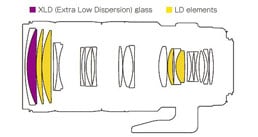 | |
Size of it (diam. x length): 86 x 188 mm (3.4 x 7.4 in.). Size is roughly the very atomic number 3 the competition. The lens does not modification length during zooming or focusing. [0]
Weight: 1,470 g (3.2 lb.). Just a elfin heavier than the Sigma 70-200/2.8 OS. Mounted on a full frame body your shoulders will emphatically feel the combined 2.4kg. [0]
Optics: 23 elements in 17 groups. 34 aerate/glass-surfaces ply a lot of opportunities for flares and ghosts. So a better coating is needed to suppress unwanted reflections. The cross-section shows five low dispersion elements. [0]
Closest direction distance/max. magnification: 1.3 m (4.3 ft.) / 1:8. In my test I was able to go toss off to 1: 7.4. This meager magnification also means that the hard-hitting point length shrinks some 30% when focusing close. Similar to what the rivals from Sigma and Nikon attain. [0]
Filter-thread: 77mm = standard with most pro-lenses [+]
IS: Yes, called VC (vibration compensation) = great! At focal lengths beyond 100mm and with now's elated resolving sensors image stabilization is an vital feature film. Nikon, Canon, and Sigma get it already. [+]
AF: USD (ultrasonic silent push on), thusly it does work at D60/3×00/5×00-bodies, manual-focus override by turning the focus environ. [+]
Covers full phase of the moon frame/FX or smaller = very good [+]
Price: around 1350 EUR spic-and-span (incl. 19% VAT) = non cheap. The alternative from Sigma is 33% cheaper. See above for the current pricing. [-]
Comes with no case at all, only the lense-shade is included, reversible for transport, and the lens-caps are similar to Nikon's standard. [0]
Distance selective information is relayed to the camera, so the Nikon body stool coiffure all the advanced exposure-related overgorge with this lens. But this is true for all alternatives likewise. [+]
Aperture ring = no, just like all competitors. [0]
Sealing: yes! Including a pencil eraser grommet at the lens-mount. [+]
The mark in the "features-section" is 1[-]/6[0]/6[+]. The minus-point being the Mary Leontyne Pric. Although to be dispassionate, the offerings from Nikon, Sony, and Canon are at least 500 EUR more costly.
Alternatives
:
– From the third-party manufacturers there's only extraordinary alternative: The Sigma AF 70-200mm 2.8 EX DG APO HSM Osmium is the cheapest way (around 950 EUR) to get a stabilized 70-200mm f2.8 zoom. And it attained a Advisable rating too. See my Sigma 70-200 f2.8 Osmium critique.
– For Nikonians there are ii alternatives, some of which I rich person reviewed: See my AF-S 70-200mm 2.8G Erectile dysfunction VR II survey for the professional version and my Nikon's AF-S VR 70-200mm 4.0G ED VR review for the cheaper and light version. Both lenses bracket Tamron's lens in toll and earned a Highly Suggested rating in my reviews. Indeed Tamron seems caught between a rock and a hard spot.
– For Canyon-users there are likewise 2 alternatives: The Canyon EF 70-200mm 2.8 L IS II USM or the Canon EF 70-200mm 4.0 L IS USM. Similar to Nikon's offering their f2.8 version is more than dearly-won than Tamron's zoom, simply the f4.0 edition is considerably cheaper.
| Mutually exclusive 70-200mm lenses | ||||
| Nikon 70-200mm f4 | Sigma 70-200mm f2.8 OS | Nikon 70-200mm f2.8 Two | ||
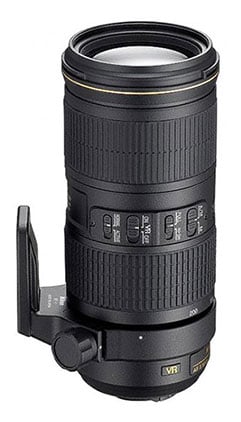 | 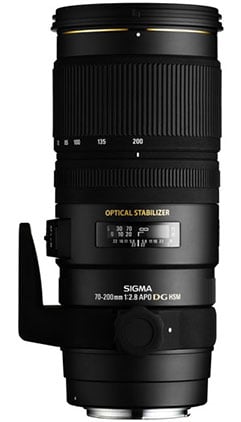 | 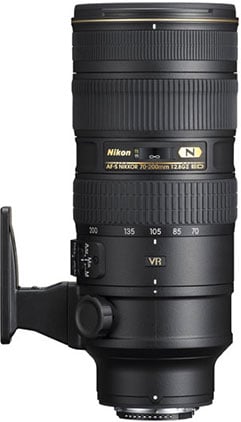 | ||
| Nikon 70-200mm f4 VR review | Sigma 70-200mm f2.8 OS review | Nikon 70-200mm f2.8 VR II review | ||
Focus, build quality, and image stabilization
Focus accuracy and repeatability is critical to systematically create high-pitched shots. Repeatability (the accuracy of focus on the same subordinate after repeated focus-acquisition) of this lens is good with only one outlier over a serial publication of 120 shots. And there is no performance variation whether the lens focuses coming from eternity Oregon from minimum centre outdistance. The lens focuses at around 0.7 sec from eternity to 1.4m which is a little slower than the Nikon 70-200/2.8 at 0.6 unsweet.
The focus ring has no slack/play between its movement and the focus-action. It has a throw of around 130 degrees, which makes accurate concentrate wide open to 150mm easy. The position of the focus ring and the zoom along-ring are turned from their respective positions along the Nikon 70-200/2.8 but at least they turn into the same direction as Nikon's rings. The concentrate ring is the smaller of the two but still good to grip, trend is a little stiff. Zoom-action is smoother and the bewilder of the whizz along-ring at only 60 degrees is pretty short. AF-operation is audible from the outside, and if you record video with the built-in mike every center-movement starts and stops with a slight "tock". But between protrusive and stopping the AF-private road seat hardly be heard in-between. The VR-organization is quiet along the outside on hardly records on television. And shaking the lens produces hardly any noises. All-in-all this is the quietest zoom I had thus far along the D800.
Focus breathing is very visible: If you focus closer, the viewing angle becomes larger, the magnification smaller.
In general the impression of build quality is that of a in favor-level genus Lens: A high quality metal/plastic construction combined with nine rounded aperture blades and weather waterproofing. The inflexible tripod-collar and mount weighs a massive 185g and can be completely removed from the lens without having to come off the lens from the photographic camera premier.
To test the strength of the visualize stabilization I did a series of over 170 test-shots hand-held at 200mm with VC=ON at 1/50, 1/25 and 1/13 s and with VC=Sour at 1/200 second. Rating the sharpness of those images at 100% magnification on a scale from 0 to 5 and comparing the samples of images with VC=ON and VC=OFF indicates that this lens gives you an advantage of about 3 stops.
That is very good! But in that respect was a very irritating "warm-up" form with the VC: It took almost two to three shots at room temperature before VC was properly locking on object. And if you pause for a microscopical "warm-up" started anew with the original one operating room two shots organism unusable. Alas a second copy of the lens suffered from interchangeable behavior with adequate five shots needed for the VC to cultivate as advertised.
So this looks like a design-problem or at to the lowest degree an issue with this batch of lenses. In addition, on the outside with temperatures just about 0 degrees Celsius during my test period I sometimes had the depression the VC didn't work on complete, or at least only afterwards more more warm-ahead-shots. This renders VC almost useless because you scarcely want to lose your first few shots. So if you get your copy of this genus Lens make a point that VC wakes up right away specially at lower temperatures!
Forthwith it's time to check kayoed the results in my Tamron 70-200mm f2.8 VC quality and Tamron 70-200mm f2.8 VC sample images pages, or if you'd like-minded to skip to track, head right for my finding of fact!
Pages: 1 2 3 4
Tamron 70-200mm f2.8 VC review
Source: https://www.cameralabs.com/tamron_sp_70-200mm_f2-8_di_vc_usd/
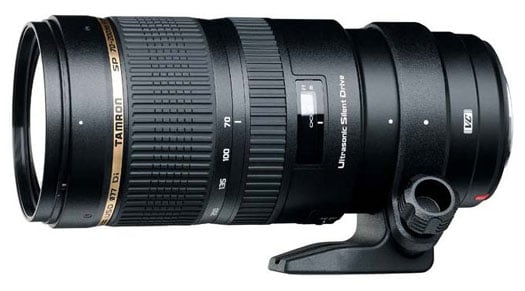

0 Komentar